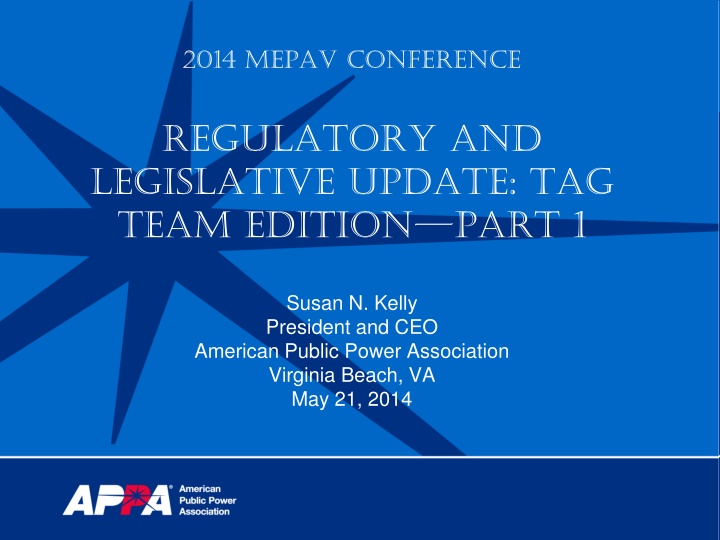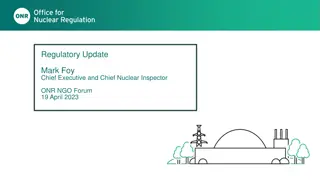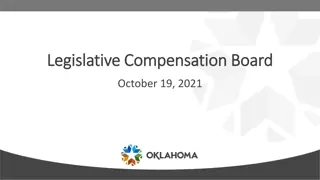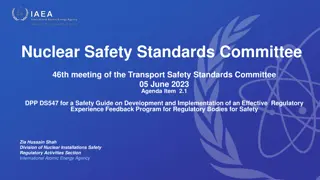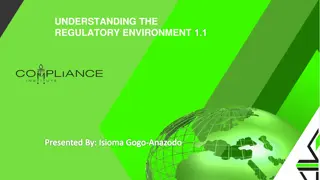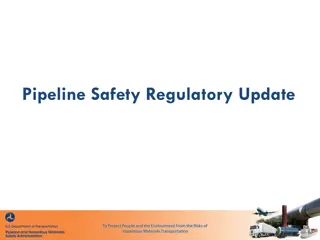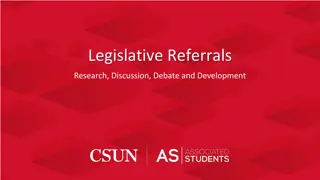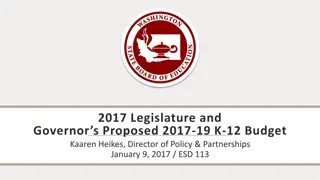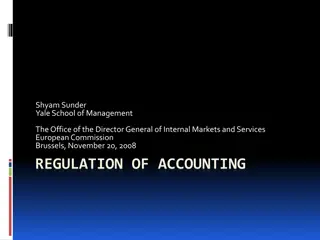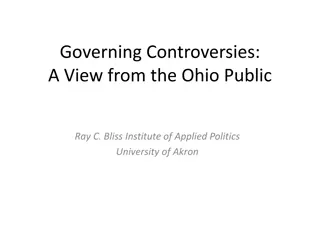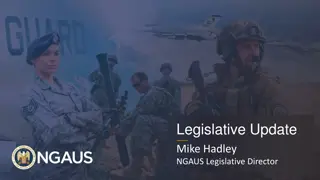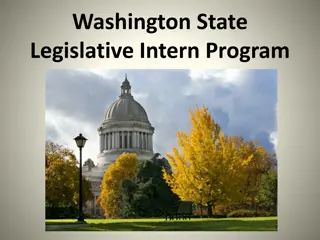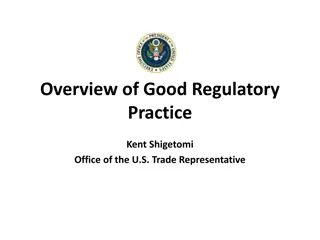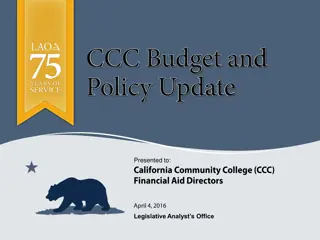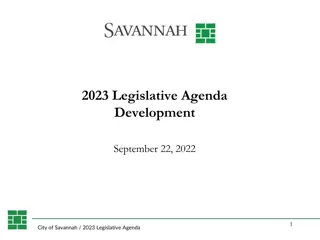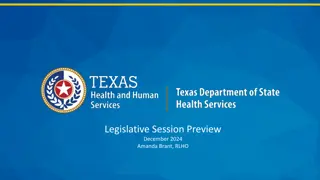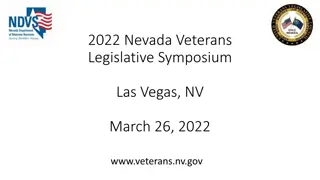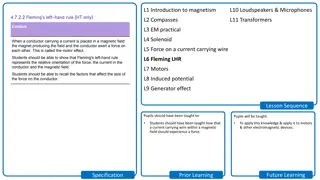Regulatory and Legislative Update at 2014 MEPAV Conference
Susan N. Kelly, President and CEO of American Public Power Association, discusses key industry issues including EPA regulations on GHG emissions and cyber/physical security concerns impacting utility operations.
Download Presentation

Please find below an Image/Link to download the presentation.
The content on the website is provided AS IS for your information and personal use only. It may not be sold, licensed, or shared on other websites without obtaining consent from the author.If you encounter any issues during the download, it is possible that the publisher has removed the file from their server.
You are allowed to download the files provided on this website for personal or commercial use, subject to the condition that they are used lawfully. All files are the property of their respective owners.
The content on the website is provided AS IS for your information and personal use only. It may not be sold, licensed, or shared on other websites without obtaining consent from the author.
E N D
Presentation Transcript
2014 MEPAV CONFERENCE Regulatory and Legislative UPDATE: TAG TEAM Edition Part 1 Susan N. Kelly President and CEO American Public Power Association Virginia Beach, VA May 21, 2014 1
I Am A Newly-Hatched CEO Mark Crisson announced his upcoming retirement in March 2013 In January, the Board offered me the position, which I gladly accepted; I became CEO on April 1 (Mark s last laugh?!) Delia Patterson, APPA s Assistant GC, became GC that same day 2
Why We Do What We Do At APPA Our job at APPA is to do our utmost to give you, our members the freedom and the tools to do your job providing reliable, affordable electric service while practicing good environmental stewardship And it is not getting easier there are three especially hairy issues on our plate now that directly impact utility operations 3
Three Especially Hairy Issues New EPA Greenhouse Gas (GHG) Regulations for new/existing generation units Cyber/Physical Security Issues: News coverage of the PG&E Metcalf substation incident have put these issues front and center for our industry (again) Distributed Generation (DG): this issue is bubbling up from the state/local level; will complicate operations and cost recovery 4
EPA Regulation of GHG APPA s position has been that this issue is best addressed via legislation, not EPA regulation under the (ill-suited) provisions of the Clean Air Act (CAA) But legislation is not happening, so the Obama Administration has told EPA to use existing law to limit GHG emissions from both new and existing power plants 5
EPA Rulemaking for CO2 Emission Limits New Plants EPA issued its re-proposed New Source Performance Standards (NSPS) for new fossil fuel plants on 9/20/13 APPA filed extensive comments on May 9; these comments supplement our comments filed in 2012 on EPA s prior proposal on this same issue 6
APPA Concerns with NSPS Proposal for New Plants Assumes availability of cheap, abundant natural gas (recent price jumps/supply hiccups show volatility) Dependence on carbon capture and storage (CCS) to justify proposed limits for new coal plants is unrealistic technology is not demonstrated or commercially viable, and EPA has not looked at non- air environmental impacts of this technology Proposed new combined cycle natural gas-fired unit limit of 1,000 lb/MWh could also present problems if plant backs renewables, due to frequent ramping 7
APPAs Pitch to EPA Final Rule for coal units must rely on actual facts, not facts EPA wishes it had Withdraw proposed Rule to eliminate reliance on CCS and re-propose with standard of 1950 lbs/MWh, which can be achieved with current technology A court appeal followed by reversal and remand helps no one, including EPA 8
But New Sources Are Only the Warm-up Act The main event will be EPA s CO2 rulemakings for existing plants That will be conducted using CAA Section 111(d) which has only been rarely used APPA expects two-part 6/2/14 EPA proposal for both existing and modified or reconstructed coal and gas-fired plants; EPA s goal is a final rule by 6/15 9
Controversy Even Prior To Issuance of EPA s Proposal Under CAA Section 111(d), EPA is supposed to issue guidelines but the states are to develop the actual compliance plans; even the states don t agree on what their role should be APPA supports reductions based on adequately demonstrated, cost-effective, and available technology 10
Anticipated Issues for Existing/Modified Plants Who will set the standard? EPA or the states? How fast will EPA expect major reductions to be made? One and done or staged deadlines? Will target reductions be based on at the unit measures or a systems approach? What measures will count towards compliance? Can energy efficiency/renewables/demand response be used? Will there be credit for already taken measures? Will environmental dispatch or regional/national trading systems be required? 11
APPAs Goal for Existing/Modified Plants APPA will argue for regulations that: Prevent customers of public power systems from paying stranded costs for existing or modified fossil-fired generation units Allow these units to operate for their remaining useful life Ensure public power systems can manage the risks/costs for investments made to implement compliance programs; we will have to comply 12
Cyber and Physical Security For the last few years, cybersecurity has been the hot issue for our industry in Congress many bills, hearings, etc. APPA/industry trade groups made great progress over last few years, turning the Congressional ship from additional new regulatory powers for FERC to increased information sharing and tools to assist us 13
Administration Efforts Last year, President Obama issued an Executive Order and Presidential Policy Directive on Cybersecurity Ordered the National Institute of Standards and Technology (NIST) to develop a voluntary cybersecurity framework for industry NIST framework released 2/12/14; generally positive; APPA will work to help implement the framework for the electric power industry 14
NERC Cybersecurity Standards Version 5 of Critical Infrastructure Protection (CIP) standards FERC approved/enforceable as of 4/1/16 Tiered security controls for cyber-systems that operate high, medium and low-impact assets FERC wants changes, including provisions for transitory devices (e.g., vendor laptops) and more specific requirements for Low Impact facilities; new draft in early June 15
Electricity Subsector Coordinating Council (ESCC) ESCC set up to improve government- industry coordination on cyber and physical security, information and technology sharing; Kevin Wailes of LES is a Co-chair; public power represented CEO members ensure face time with top-level officials from DHS, DOE Staff groups working between meetings 16
Physical Is the New Cyber? Disclosure of the 2013 Metcalf Substation incident in the WSJ earlier this year and subsequent press coverage/Hill letters have put physical security in the spotlight On 3/7/14, FERC ordered NERC to file new reliability standards to address physical security risks for identified critical facilities within 90 days (6/5/14); APPA participating at both NERC and FERC 17
Norris Concurrence It appears to me that many people, both in the private and public sector, have rushed to address the need for physical security solely in response to the Metcalf incident. As I have said previously, I believe that incident is a serious one, and significant efforts should be made to determine who was responsible for the incident, and to identify appropriate next steps to prevent such incidents from happening in the future. But, it has been well understood for decades that our nation s grid has been vulnerable to physical attack. We simply cannot erect enough barriers to protect North America s over 400,000 circuit miles of transmission, and 55,000 transmission substations. While some locations may require additional physical barriers, I continue to urge caution against over-reaction. I remain concerned that the recent momentum will result in the electricity sector potentially spending billions of dollars erecting physical barriers to protect our grid infrastructure. I am particularly troubled because most if not all of those costs will be passed through to ratepayers. 18
Proposed NERC Standard Now Completed Standard drafting team (SDT) included Steve Pelcher of Santee Cooper Standard drafted and balloted - 86% affirmative vote; NERC filing by 6/5/14 or even earlier; FERC NOPR to follow Process has been subject to full public scrutiny; skeptics think NERC process too industry driven 19
Congress is Watching Closely 3/26/14 closed briefing of House Energy and Commerce Committee; Rep. Waxman noted NERC has never come up with a standard in 90 days before 4/10/14 Senate Energy and Natural Resources Committee hearing; Chairman Landrieu/Ranking Member Murkowski well briefed and hearing went well for industry 20
APPAs Goals for the Physical Security Standards Limit to the truly critical physical facilities we cannot protect 55,000 substations Provide utilities with critical facilities flexibility to decide how to best to protect those facilities; don t draft prescriptive standards that create Maginot Lines We share Commissioner Norris concerns re cost-effectiveness 21
Distributed Generation Coming to Your Utility? APPA concerned about impact of distributed generation (DG) on members Substantial federal/state tax and ratemaking subsidies jumpstarted DG but now seeing technological leaps and strong consumer interest Impacts utility operations, revenue recovery, retail customer relationships, resource portfolio Primarily a state and local issue, but some FERC aspects Public Utility Regulatory Policies Act (PURPA), small generator interconnection rules 22
Need To Work With Retail Customers on DG Issues Our retail customers own us if they want to do DG, we need to accommodate them and make this a win-win proposition Need to balance interests of DG customers, traditional customers, bondholders; reexamine retail rate designs Develop DG options and cost-effective alternatives (e.g., community solar) 23
Education and Tools DG (esp. solar PV) is major focus of APPA programming this year; members need to learn from those on front lines (CA, AZ) 2013 DG paper; coming paper on DG and ratemaking; new PURPA Manual done by Ken Rose for APPA/NRECA/NARUC/EEI APPA working on communications, rate and technical toolkits to assist members 24
The Moral of This Presentation You must actively participate in the legislative, regulatory and legal arenas to ensure your views/concerns are heard, both at state and federal levels MEPAV and APPA give you the platform to do this; your boots on the ground (and on the Hill!) are important; stay involved! 25
